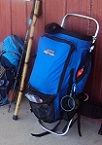Bullwinkle58
Posts: 11302
Joined: 2/24/2009
Status: offline

|
quote:
ORIGINAL: Feltan
Bullwinkle,
True about the technical aspects of ASW and the DL system. However, the way I see it two things in game are possible: 1) against the AI or a poor Japanese player, US submarines can approximate real life losses upon the Japanese merchant fleet; 2) against a much better IJN player adopting convoys (vice single ship dispatches) and using more aircraft in an ASW role, Japanese losses to submarines are dramatically reduces (which is the same thing the Brits found out against the U-Boats).
Notwithstanding the salient and good points of your earlier post, it seems the game is doing a relatively good job of modeling submarine combat at a macro level -- meaning gross-level losses do not seem out-of-bounds when Japan steps up its game. In fact, simply putting someone in charge of the IJN that has respect for the Allied sub threat, and does not hold in contempt anyone who would stoop so low as to sink a merchant vessel (i.e. real life IJN attitudes), would IMHO result in far fewer losses to Japan without a discussion of ASW tactics or capabilities.
Japan could not realistically expect to stop the USN submarine campaign. However, there is likewise no guarantee that the same submarine campaign would have repeated historical levels of sinking vessels had Japan adopted, and adopted early, some very basic tactics (i.e., convoys with escorts) and increased ASW aircraft patrols.
Regards,
Feltan
OK, let's put some numbers around this subject, shall we? A number of "truths" about the submarine war have developed in the forum which are not supported by the facts.
The JANAC report--Joint Army-Navy Assessment Committee--post-war is the best available data source for the results of the submarine campaign. It used both Allied sources and Japanese primary sources--logs, witness testimony, repair records, etc.-- to adjust wartime claims and awards. Almost always downward from the wartime numbers as data from the other side was added to the mix. It's not perfect and no report can be, but it's the bible.
The relevant portion is here http://www.ibiblio.org/hyperwar/Japan/IJN/JANAC-Losses/
Topline the report shows what I said before. Submarines were the dominant force in destroying Japanese naval and maritime assets. They exceeded aircraft of all services by a good bit. And no, the game does not come close to modeling this, not even against the AI. For many of the reasons I outlined in that other post.
US Forces sank 2728 vessels of all kinds, for 9,736,068 tons. All other Allied forces together sank 118 vessels for 281,300 tons.
US and other Allied forces shared credit for 22 vessels for 72,787 tons.
Of the US forces numbers, USN submarines sank 1314 vessels for 5,320,094 tons. (My 90ish total in late 1943 against Lokasenna has a bit of a way to go.)
US surface forces sank 123 for 321,166 tons.
Army aircraft of all kinds sank 310 for 701,832 tons.
Navy-Marine aircraft of all kinds sank 619 for 2,333,597 tons.
Mines sank 266 vessels for 609, 655 tons.
The rest are in miscellaneous categories.
Those are the facts of history. The link I provided also has charts for day-by-day Japanese losses for the whole war by type vessel, location, agent, etc. It has detailed totals by submarine. It has alphabetical lists. It has data on all Allied navies as well.
If one wanted to see how many escorts were sunk versus how many merchants it is there. However, just as a point of reference, of the submarine totals above USN submarines sank 201 naval vessels of all types for 540,192 tons and 1113 merchant vessels for 4,779,902 tons. Given the naval numbers include vessels like Shinano and Kongo, it's easy to see a lot of the naval sinkings were small escorts. The exact details are in the document. But those details do illustrate two points made clear by reading scores of patrol reports, which I have done: most merchants in transit were escorted, and most submarine COs did not target escorts first, or half the time, or a fifth of the time. The game is different.
BTW, if you want to read patrol reports in their original format, http://www.maritime.org/doc/subreports.htm is a good place to access many of them.
In the game community there has over time grown this assumption that the Japanese did not escort their ships, or use "convoys." Years ago here there were long, vehement threads about what constitutes a convoy, and does one have to fit the Atlantic model to earn the name. In my view, no. Germany and Japan faced wholly different economic and military challenges. Japan is an island and her empire constituted hundreds more. Germany is a continental power that depended on trains for movement of large quantities of its economy. In the Atlantic the Allies had a very simple supply chain in contrast to Japan's. Several huge departure ports (Hampton Roads, NYC, Halifax) and several huge destination ports (UK and Murmansk/Archangel primarily.) Point to point of value-added finished goods. The USA was much more similar to Germany than Japan on the production end of the chain.
So even if Japan had wanted to run 50-100 ship convoys, in general it would have made no sense. The departure ports in the resource areas mostly could not handle the volume, and the distribution side was atomized to island garrisons, not huge dumps such as Portsmouth. And the submarine war quickly evolved to meet this reality. The USN until quite late did not operate submarines cooperatively as the Germans did. Individual boats were not only allowed, but encouraged, to hunt. COs were rewarded for innovation and skill in that pursuit. There was no grid system in the Pacific, no phoning home to ComSubPac. Constantly comparing the PTO submarine campaign to the Atlantic is a waste of time. Geographically if no other reason. And there are many other reasons.
Could Japan have done better if they had "only tried"? We see this here a lot too. The answer is, no. They did not have the ships, the capability to make the ships, the electronics, the training infrastructure, or the raw materials (av gas) to mount a huge, Atlantic-style ASW effort. Even so they destroyed more submarines than we usually see in the game. In the game mission kills are too easy, but losses are pretty rare.
If you're interested, this site
http://www.ibiblio.org/hyperwar/USN/rep/WDR/WDR58/WDR58-I.html
details every single case of non-fatal damage to USN fleet-boat submarines in the war.
"Briefs of War Damage Incurred by U.S. Submarine During World War II
1. A survey of war patrol reports and other information available to the Bureau indicates that during World War II there were 110 separate instances in which United States fleet type submarines survived damage from attack by either enemy or friendly forces where the damage received may be considered as more than negligible or where the circumstances of the attack or the nature of the damage has been considered of sufficient interest to warrant reporting. Briefs of each of these damage cases are presented on the following pages of this Appendix. Receipt of information with substantiating documents in correction of any of the data which may be found in error will be appreciated. Address Code 424, Bureau of Ships. "
It's fascinating reading. It's also roughly the amount of damage we see in the game in about six months of play.
This link
http://www.ibiblio.org/hyperwar/USN/rep/WDR/WDR58/WDR58-II.html
is the best summary of submarine losses I know of, assembled from:
"1. A tabular summary of all United States submarine losses incurred throughout World War II is presented on the following pages. This summary is based upon information contained in the publication entitled United States Submarine Losses in World War II prepared by the Commander Submarine Force, Pacific Fleet, and ComSubPacAdmin ltr. FF12-10(A)/A16-02, Serial No. 00349 of 21 September 1945 (Statements of Survivors of U.S. submarines Lost in Action). In arriving at the conclusions set forth in the referenced publication regarding the circumstances of each submarine loss, all of the following sources were considered:
(a) The operation order delineating each submarine's mission and assigned patrol areas.
(b) Dispatches sent to and received from each submarine during the patrol on which lost.
(c) Reports of Allied aircraft, surface ships and submarines, particularly those operating in conjunction with the lost submarine as a coordinated attack group, containing mention of contacts, rendezvous, submarine actions against enemy shipping, enemy anti-submarine attacks, or other evidence which might indicate the presence of the submarine concerned or furnish information on its loss.
(d) Reports of enemy or Allied mines in the assigned patrol areas or routes to and from those areas.
(e) Statements of survivors, repatriated prisoners of war and friendly guerilla forces.
(f) A list of anti-submarine attacks provided by the Japanese upon termination of the war.
2. Source (f), the list of Japanese anti-submarine attacks made during World War II, consists of two sections, both supposedly exact translations, and contains only those actions which the Japanese assessed as resulting in positive sinking. The first section gives the date and location of each attack; the second section contains brief amplifying comments on certain attacks, particularly those made after July 1943 when the Japanese claims to have commenced more rigid investigation of reported sinkings. In many cases no information is available as to whether the attacks were made by surface ships, planes or submarines. Unfortunately, those attacks which were thought to be ineffective, or whose dates or locations were uncertain, were not recorded by the Japanese. In addition, there are many anti-submarine attacks that are known to have occurred, including several cases where our submarines were lost and survivors were captured by the Japanese, which are not contained in the list since apparently either no report was ever made to a central Japanese agency or the attacking ships or planes were themselves lost before returning to base. It should be borne in mind that one or more of these unrecorded attacks might better explain the loss of certain submarines which in the summary below have been attributed to other attacks, mines, or for which no known attack could conceivably have applied. However, the Japanese were prone to accept the mot inconclusive evidence a proof of a sinking and for that reason their list is probably fairly complete. For example, it contains a total of 468 "positive" sinkings, whereas at most only 411 U.S. submarine losses were due directly to Japanese action, including passive means such as mines. Where only one listed attack could be tied in with a submarine loss, in the absence of better information it has been designated in the tabular summary below as the probable cause of the loss."
Also fascinating, and sad, reading.
Those two reports together are the best the Japanese Empire could do. I leave it up to the reader of both to decide how much more effort and investment would have been required to even double these results. And doubling losses would have still left roughly 300 submarines at sea.
< Message edited by Bullwinkle58 -- 7/21/2015 6:18:17 PM >
_____________________________
The Moose
|
 Printable Version
Printable Version










 And on periscopes? Magic!
And on periscopes? Magic! 







 Dr. Freud would make note of this.
Dr. Freud would make note of this.  New Messages
New Messages No New Messages
No New Messages Hot Topic w/ New Messages
Hot Topic w/ New Messages Hot Topic w/o New Messages
Hot Topic w/o New Messages Locked w/ New Messages
Locked w/ New Messages Locked w/o New Messages
Locked w/o New Messages Post New Thread
Post New Thread